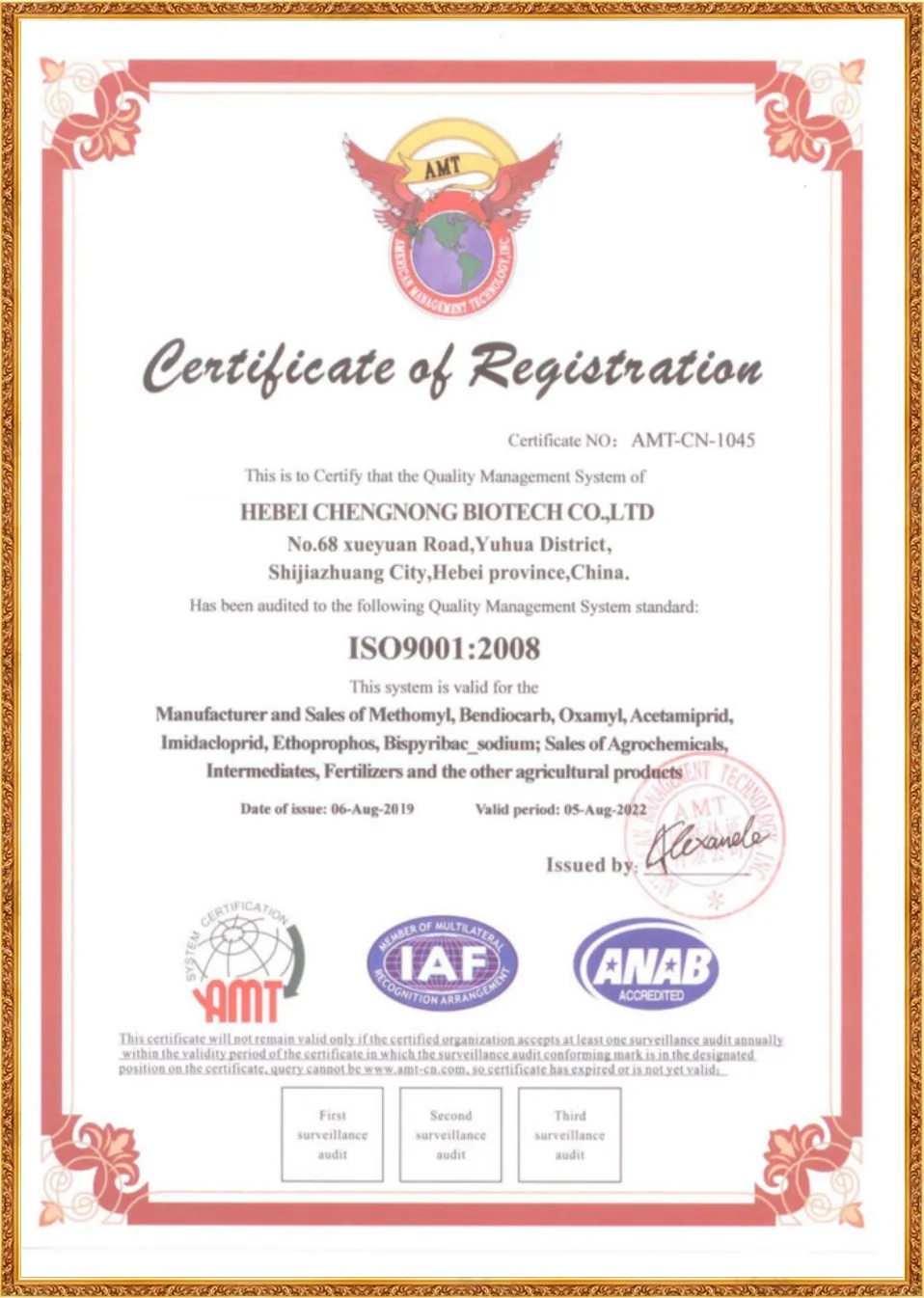
Nov . 11, 2024 05:42 Back to list
Exploring the Efficacy and Applications of Spirotetramat in Modern Agriculture
Understanding Spirotetramat A Key Player in Pest Control
In the world of agricultural pest management, one compound that has garnered considerable attention is Spirotetramat, commonly recognized by its trade name Movento. This insecticide belongs to the tetramic acid class and has a unique mechanism of action that distinguishes it from traditional pest control agents.
What is Spirotetramat?
Spirotetramat was developed by Bayer CropScience and is primarily used to control a range of sap-sucking insects, including aphids, whiteflies, and various scale insects. What makes Spirotetramat particularly noteworthy is its ability to disrupt the growth and development of target pests. Upon application, it is absorbed by the plant and translocated throughout its tissues. This systemic action allows it to effectively control pests that feed on the plant's sap, thus making it a valuable tool for managing populations of resistant insect species.
Mechanism of Action
Spirotetramat works by inhibiting lipid synthesis in insects, leading to reproductive and growth impairment. By disrupting the formation of new lipids, it interferes with vital biological processes necessary for the insects’ development. As a result, pests usually exhibit symptoms of decline shortly after exposure, such as reduced feeding and delayed growth stages. Interestingly, Spirotetramat not only impacts adult insects but is also effective against their eggs and larvae, providing a comprehensive solution to pest management.
Environmental Impact and Safety
spirotetramat movento

One of the advantages of Spirotetramat is its relatively low toxicity to non-target organisms, including beneficial insects like bees when used as directed. Its mode of action and systemic properties allow for targeted applications, reducing the risk of broad-spectrum harm often associated with conventional insecticides. Furthermore, Spirotetramat has shown a favorable environmental profile, with a low potential for groundwater contamination and a short environmental persistence, making it less likely to pose a long-term risk to the ecosystem.
Applications in Agriculture
Spirotetramat is particularly effective in various crops, including fruit trees, vegetables, and ornamentals. Its application is often timed to coincide with the life stages of key pests, enhancing its effectiveness. The compound can be utilized in integrated pest management (IPM) programs, allowing farmers to combine it with other control tactics such as biological pest control, cultural practices, and other pest management strategies to maintain sustainable agricultural practices.
Resistant Management
With the increasing challenge of insect resistance to commonly used insecticides, Spirotetramat provides an essential tool in resistance management strategies. Its unique mode of action can be incorporated into rotation programs to reduce the pressure on existing insect populations, hence delaying the onset of resistance. By diversifying the pest control arsenal, farmers can achieve more sustainable and effective pest management over time.
Conclusion
Spirotetramat, or Movento, represents a significant advancement in the realm of agricultural pest control. Its unique systemic action, combined with its favorable safety profile and effectiveness against a range of pests, positions it as an essential tool for farmers looking to manage pests sustainably. As agriculture continues to evolve, the integration of innovative solutions like Spirotetramat will play a crucial role in ensuring food security while minimizing environmental impact.
-
Insecticide Spirotetramat 11% + Thiacloprid 11% SC at Good Price
NewsJul.30,2025
-
Best Abamectin SDS - Premium Quality & Reliable Safety Data
NewsJul.29,2025
-
Agrochemicals Pesticides Solutions for Sustainable Farming
NewsJul.29,2025
-
High-Quality Tebuconazole Fungicide for Crop Protection at Best Price
NewsJul.29,2025
-
Chlorfenapyr 8% + Clothianidin 20%SC Pesticide Mixture for Effective Pest Control
NewsJul.28,2025
-
Best Azoxystrobin Difenoconazole Supplier for Crop Protection
NewsJul.28,2025
